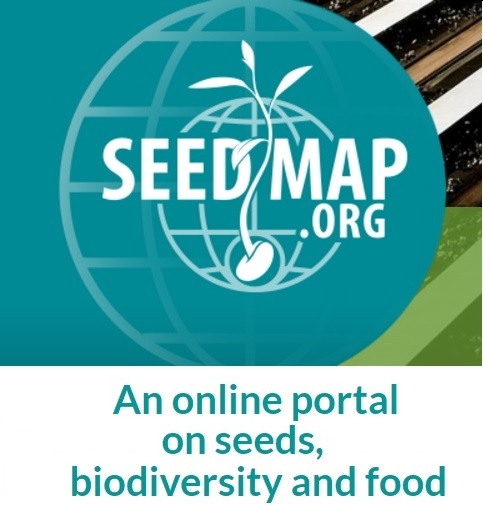Seedmap.org : an online portal on Seeds, Biodiversity and Food


Seedmap.org portal - launched in 2013 - is a unique, user-friendly, interactive and comprehensive online tool to explore where our food comes from, the challenges facing agriculture today, and strategies to overcome them.
_________________________________________________________________________________________________
A diversity of food is vital for our health. Most of fruits, veggies were not originally available to us: they came from lands hundreds or even thousand kilometers away.
Virtually all of the foods we eat today– our major crops and most livestock species – have their origins in the tropics and subtropics of Africa, Asia, Latin America and Oceania. Scientists have identified at least twelve major geographic “centres of diversity” – regions, or hotspots, that harbor a disproportionately high percentage of all plant, livestock, and cultural diversity.
 Currently featuring over 350 case studies, SEED.org map (based on Google technology) invites you to click through and learn about the origins of our food crops, the farmers who continue to nurture them, the threats to our food supply, and achievable solutions. Organized by themes, each case study contains a brief summary complete with links to additional resources as well as photographs and relevant video content offering rich information nodes on a broad range of topics of interest. |
Seedmap.org gives you two ways to find out more about where our food came from:
1. Browse the Interactive Online Seed Map and: (1) learn more about the 12 major centres of diversity; (2) find out where some of the world’s main crops came from; (3) find out where some of the world’s main livestock came from.
2. Download and print Where Does our Food Come From? poster - a tool to visually see where the 12 major centres of diversity are located as well as which main crops and livestock originated there. |
The way to safeguard our food supply is by protecting these centres of diversity, as well as using and continuing to adapt the plant and genetic diversity carefully bred and nurtured by farmers.
Centres of diversity refer to both regions where crops and livestock were originally domesticated from their wild ancestors (regions of true origin) as well as regions of subsequent spread where they are continually evolving a diversity of new varieties and traits through ongoing adaptation to their environment and selection by farmers- that’s why a specific crop can be listed in more than one centre of diversity.
Visit also Seedmap.org blog (a companion website to seedmap.org portal) complete with the latest news, useful resources, and information on current campaigns promoting food justice.
Teaching Tools: Resources for all : here are resources that explore what’s wrong with our food system and what we can do about it.
Find out more about Seedmap.org HERE.
_________________________________________________________________________________________________
Related content:
- BioSharing.org: Find, Discover and Learn!
- Bioversity International: open research for development in agricultural and tree biodiversity
- CAPSELLA project: collaborating for knowledge and linking communities
- Open Source Seed Initiative : Fair and Open Access to plant genetic resources worldwide
- BIO-Diverse : for Science, Education and Communication
- FreeBook: Agroecology : The Bold Future of Farming in Africa


